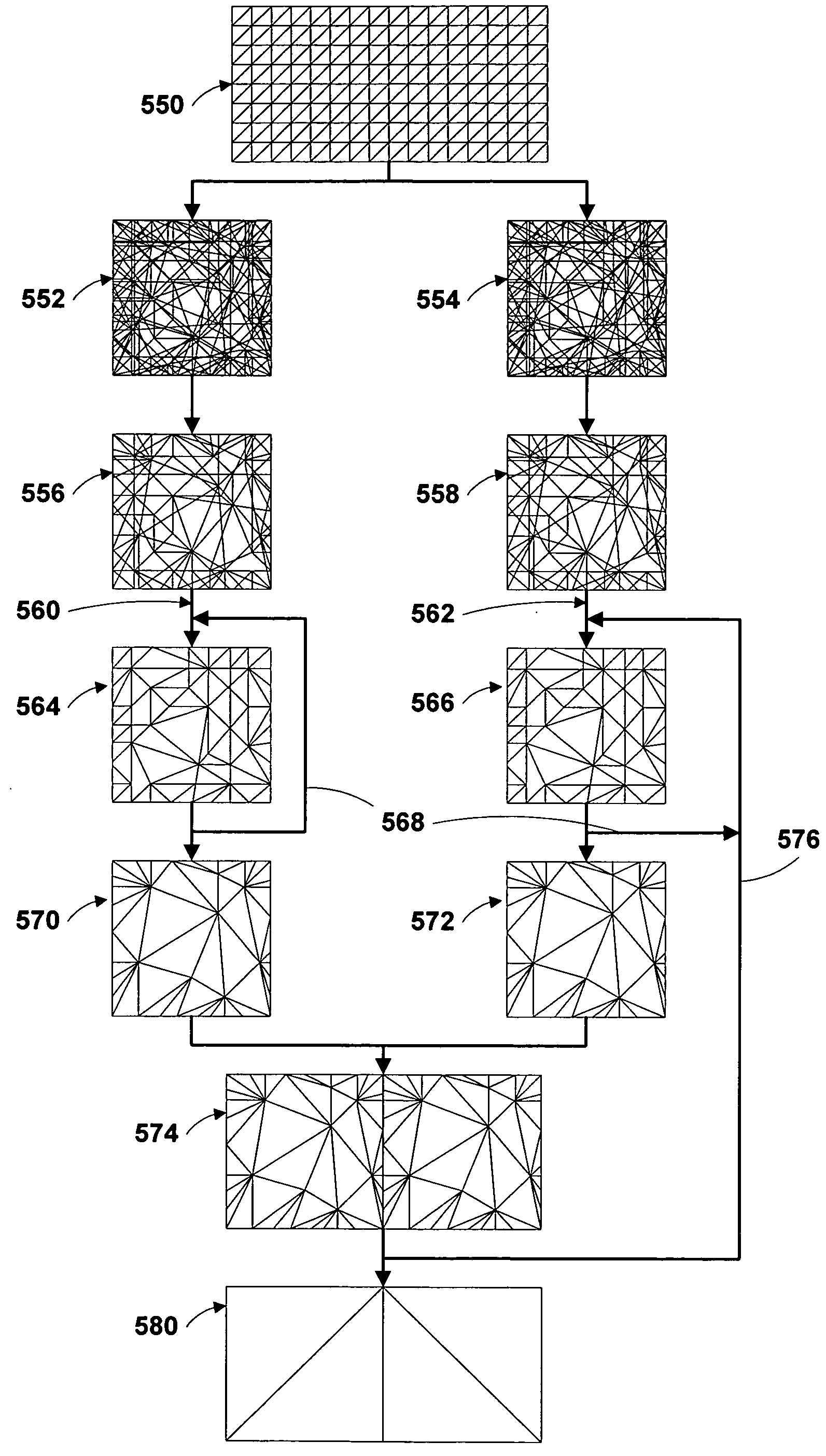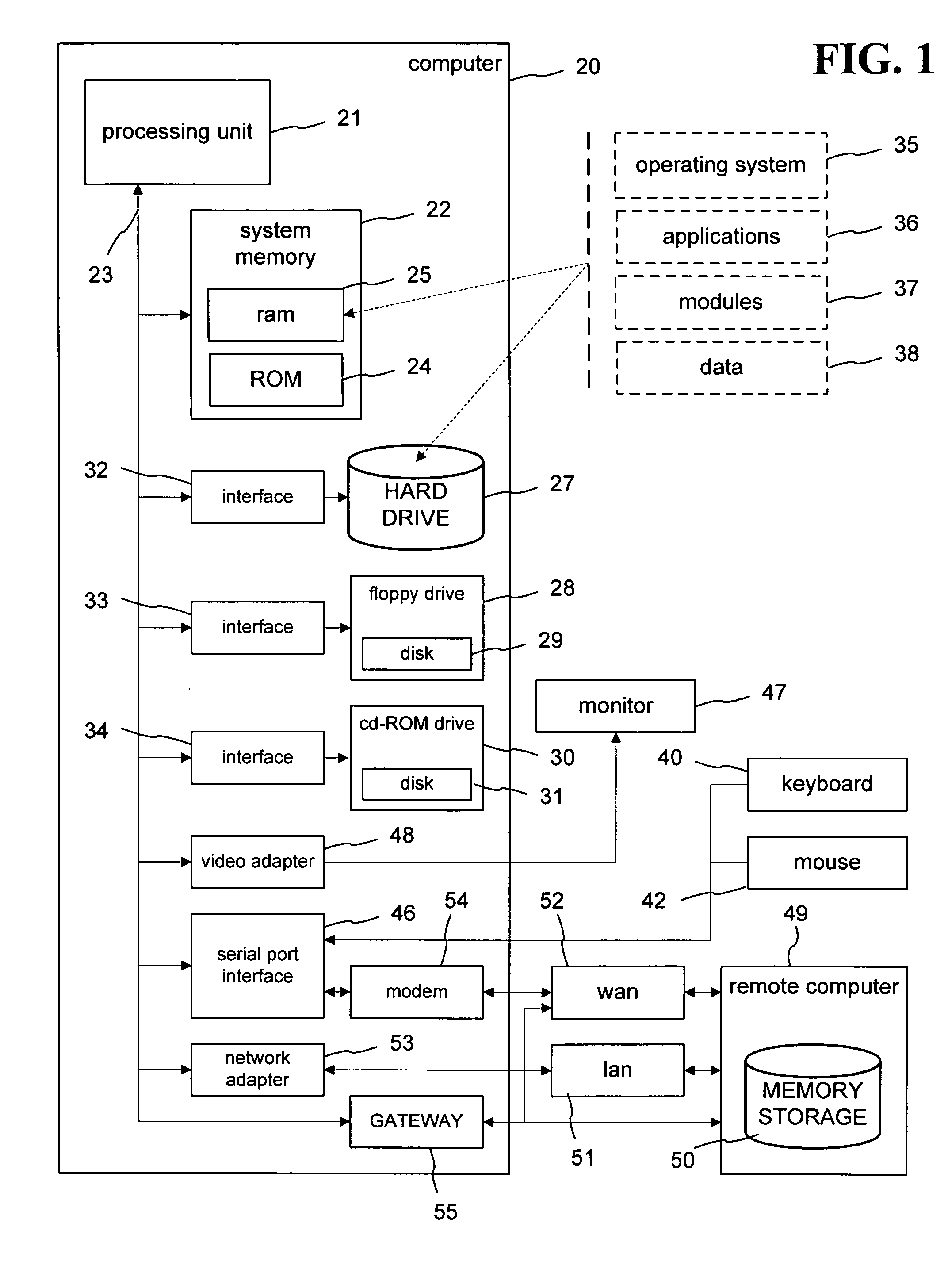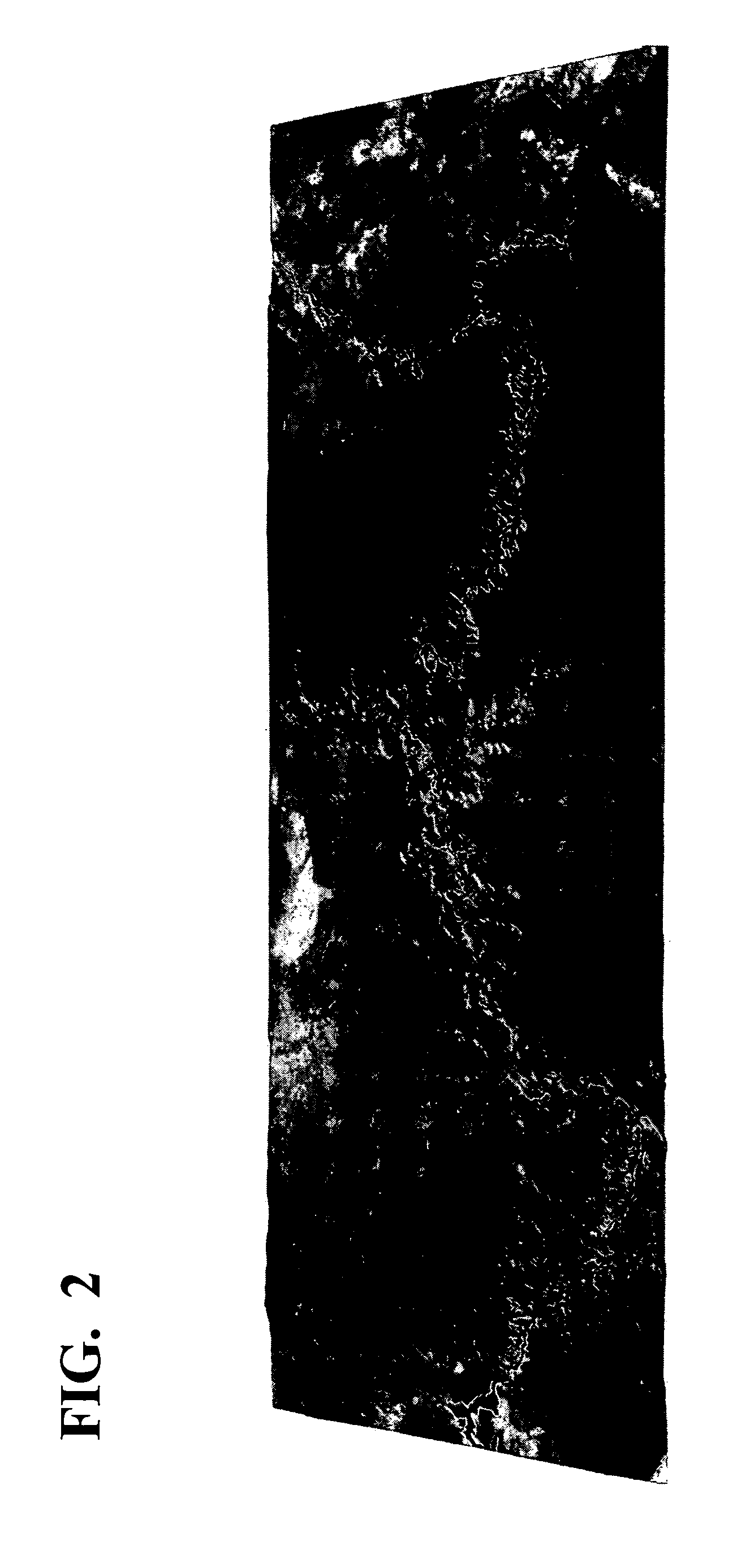Regional progressive meshes
a technology of progressive meshes and regions, applied in the field of geometric modeling using polygonal meshes, can solve the problems of consuming computer resources, consuming computer resources, and requiring enormous computer resources to manipulate large meshes, so as to reduce resource requirements, optimize storage requirements, and save resources.
- Summary
- Abstract
- Description
- Claims
- Application Information
AI Technical Summary
Benefits of technology
Problems solved by technology
Method used
Image
Examples
Embodiment Construction
[0032] The technology is directed toward geometric modeling using polygonal meshes for computer graphics. In particular, a view-dependent progressive-mesh framework allows view-dependent level-of-detail control over arbitrary triangle meshes. Such view-dependent control over mesh rendering is particularly well-suited for interactive environments, such as 3D games presenting flights over background meshes, or fly-through reviews of multi-dimensional models (e.g., a real-time fly-through of a CAD / CAM project). In such situations, a viewer / user only sees a small portion of an entire mesh model, and within the visible portion of the mesh many regions are distant and can therefore be represented at a coarser level-of-detail.
[0033] The technology conserves computer resources by limiting most resource allocation to those areas of the mesh that are visible (or near) to the viewer / user. Known progressive-mesh techniques are extended to achieve temporal coherence through the runtime creation...
PUM
 Login to View More
Login to View More Abstract
Description
Claims
Application Information
 Login to View More
Login to View More - R&D
- Intellectual Property
- Life Sciences
- Materials
- Tech Scout
- Unparalleled Data Quality
- Higher Quality Content
- 60% Fewer Hallucinations
Browse by: Latest US Patents, China's latest patents, Technical Efficacy Thesaurus, Application Domain, Technology Topic, Popular Technical Reports.
© 2025 PatSnap. All rights reserved.Legal|Privacy policy|Modern Slavery Act Transparency Statement|Sitemap|About US| Contact US: help@patsnap.com



